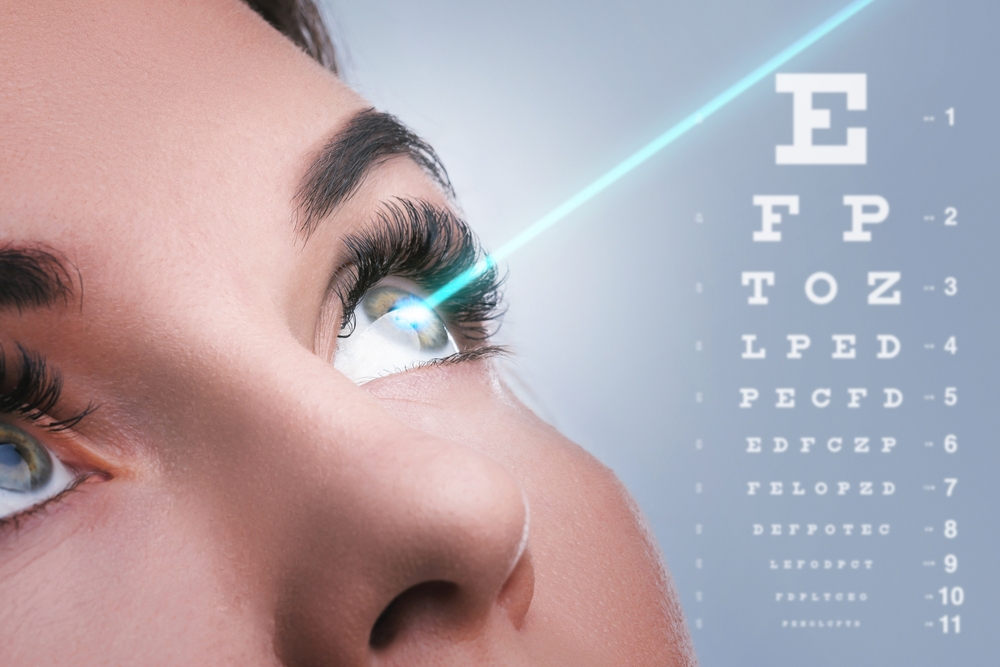Is Laser Surgey for Eyes Actually Safe?
Posted on Categories Discover Magazine

Type the question “is LASIK dangerous?” into a search engine, and the top results are from medical providers and eye clinics that assure the procedure is safe.
LASIK, which stands for Laser-Assisted In Situ Keratomileusis, is an in-office procedure meant to correct vision so a person no longer has to wear glasses or contacts. It’s a popular procedure, and about 600,000 people undergo it yearly.
But last July, the Food and Drug Administration (FDA) began drafting guidance for practitioners on how to advise patients as to whether they are good candidates for the procedure. Based on complaints, the FDA has found risks associated with LASIK, and patients need to be better informed of the dangers before they look into the laser.
How Does LASIK Work?
What exactly is LASIK? It’s a procedure that uses a laser to reshape a person’s cornea so they can see better. The cornea is the clear part of the eye that covers the iris, pupil and everything else that lies beneath.
The cornea refracts light, and depending on a person’s eye shape, the way the light is refracted can cause blurriness.
A person, for example, who is nearsighted (myopia) has an eye that is too long. Light focuses on the front of the retina and makes distant objects seem fuzzy. In contrast, a farsighted person (hyperopia) has an eye that is too short. Light focuses behind the retina, and objects close up seem blurry.
Read More: Our Eyes May Hold Evolutionary Secrets
Laser Surgery for Eyes
With LASIK, a physician uses a blade or a laser to make a circular flap in the top layer of the cornea. The flap is pulled back, and the physician uses a laser to reshape the corneal tissues as needed. The flap is then placed back into position. The procedure takes about 10 to 15 minutes per eye.
(Credit: VectorMine/Shutterstock)
LASIK can help with nearsightedness, farsightedness and astigmatism. It cannot remedy normal vision loss due to aging. Although it can improve vision, it cannot make it perfect, and some patients will still need glasses or contacts.
Is Lasik Safe?
One textbook oddly described it as a procedure that was best for “easygoing” people who wouldn’t mind if they still needed to wear glasses after the procedure when reading or driving at night. The author did not advise LASIK for those with a “grim outlook.”
The FDA draft, however, lists reasons why LASIK is unsuitable for people with specific eye conditions, despite whatever sunny disposition they possess.
For example, people with severe dry eye are not good candidates for the surgery because it can risk blurred vision, dryness and discomfort that may not improve over time. LASIK is also not recommended for people with a thin cornea because it could decrease vision.
The FDA also warns against LASIK for people with autoimmune diseases like lupus or connective tissue diseases like rheumatoid arthritis. In these patients, LASIK could lead to severe dry eye, infection, inflammation and troubles with healing.
There is also a risk of “corneal melting,” a gasp-worthy term that ophthalmologists use to describe a corneal dissolution that could lead to permanent vision loss.
LASIK Side Effects
There are also risks for people who do not have preexisting conditions. The FDA report finds that LASIK can decrease vision in settings with poor lighting.
A person may struggle to see when they are in a dim room or situations with a low light-to-dark contrast. They may have trouble driving in the dark or when there is fog, rain or snow.
LASIK can also lead to a “halo effect” with lights. For example, a lamppost might seem like it has an aura around it. Similarly, glare issues can mean headlights from oncoming cars have star shapes.
(Credit: Photomann7/Shutterstock)
The Other 10 Percent
Many clinics that offer LASIK will boast on their websites that 90 to 95 percent of patients are satisfied with the results. What about the other 5 to 10 percent?
The FDA report finds that some patients experience ongoing pain after the procedure. Some have even reported double vision. Others have said they feel traumatized because the way they see and process the world has permanently changed.
The report notes there have been instances of suicide that have been attributed to unhappiness post-LASIK, though more information is needed to be sure.
Read More: Deep Vision
LASIK Flap Dislocation
Researchers, however, have been able to connect LASIK with flap dislocation even more than a decade later. Flap dislocation is when the flap used to open the top layer of the cornea reopens post-procedure. It occurs in as many as 2 percent of LASIK patients.
Flap dislocation typically occurs in the first 48 hours post-procedure and is often due to the patient rubbing or touching their eyes. But traumatic events due to injury or accident can reopen the flap, even after years have passed.
In one reported incident, a patient who had LASIK almost seven years earlier fell and was struck in the eye with an “unknown object.” Another patient suffered flap dislocation three years after surgery due to a car accident. One patient was 10 months post-LASIK when her nail jabbed her eye as she removed her sweater.
Ophthalmologists consider flap dislocation a medical emergency. The patient typically requires a bandage lens, antibiotics and corticosteroids until corrective surgery can be scheduled.
According to the FDA, all of these possibilities need to be provided to a patient on a type of warning label so they can know whether they should pass on the procedure.
Read More: What Science Says About Sanpaku Eyes